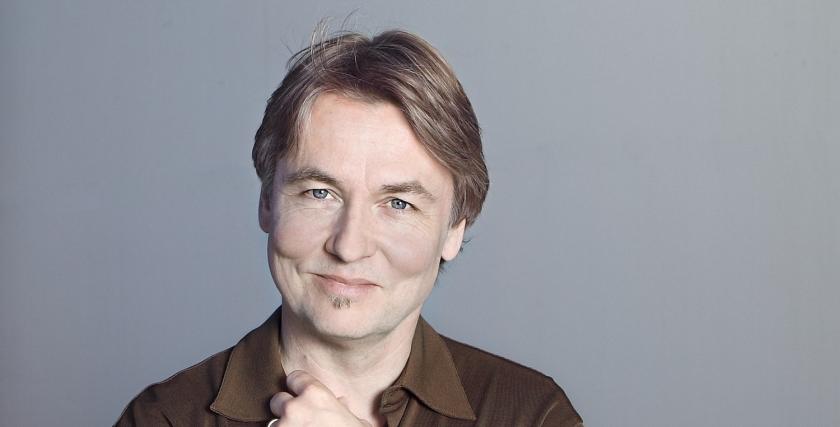Hector Berlioz knew from early on in life which aspects of death he would want to avoid. He had seen quite enough of the medical textbooks that his father had tried to foist upon him. He had even got as far as smelling the dissecting table as a medical student in Paris, desperately counting the days before he could make his escape into music. The composition commission he received just a few years later in 1837 from the Minister of the Interior was exactly what he wanted and needed him to free himself from those memories, to write a requiem full of grandeur, glory and the sound and the sheen of massed choirs and brass, originally requiring no fewer than 400 performers to fill the echoing spaces under the 100 metre high dome of the Eglise des Invalides.
Berlioz was a relentless character. Just as in the prose of his memoirs and letters, once the composer, the main instigator of the idée fixe in music, gets hold of an motif, he's like a dog with a bone. From the three-times repeated rising string figure which set the work in motion, to its final six pianissimo stretched-out amens, there is repetition, endless circling. So the task of the performers is to pace the work, to give it variety, to keep a sense of forward motion. The full public blaze of the louder moments is to be relished, and to be contrasted with the more intimate and introspective passages.
Esa-Pekka Salonen clearly had command both of the orchestra and of the daring effects Berlioz brings off. The synchronisation of the four choruses of brass placed around the auditorium was superb. As Salonen spun round to bring them in, he was clearly communicating energy and enjoyment. The brutal downbow stabs from the violins in the "Lacrymosa" produced exactly the right, savagely destabilized, lopsided 3/4 bar that Berlioz wanted. There were some fine solo moments too, notably the refined and delicious tone of cor anglais player Jill Crowther in the "Quid Sum Miser." The solo vocal contribution of French tenor Sébastien Droy (pictured right below Agence Thérèse Cedelle) in the "Sanctus" was flawless and urbane.
 What continually kept the performance from becoming transcendent, however, was that Salonen simply didn't pay enough attention to shaping the contribution of the chorus. Whereas chorus director Adrian Partington is renowned for having brought quality and classy direction to choirs through great swathes of the west of England, his choral singers from Gloucester and Bristol were simply not getting enough detail or direction from the conductor. Surely the words need to be wrested from the mouths of British amateur choruses syllable by syllable, as Sir Colin Davis was wont to do (check out a Proms performance from 2000). Surely pianissimi have to be begged for, and truly earned. There was one surreal moment in the "Domine Jesu Christe." The words the chorus were singing were all about St Michael leading them from the bottomess pit of hell into holy light. But they were singing sitting down, their delivery was monochrome, unengaged, it was a moment glossed over, and then sadly gone.
What continually kept the performance from becoming transcendent, however, was that Salonen simply didn't pay enough attention to shaping the contribution of the chorus. Whereas chorus director Adrian Partington is renowned for having brought quality and classy direction to choirs through great swathes of the west of England, his choral singers from Gloucester and Bristol were simply not getting enough detail or direction from the conductor. Surely the words need to be wrested from the mouths of British amateur choruses syllable by syllable, as Sir Colin Davis was wont to do (check out a Proms performance from 2000). Surely pianissimi have to be begged for, and truly earned. There was one surreal moment in the "Domine Jesu Christe." The words the chorus were singing were all about St Michael leading them from the bottomess pit of hell into holy light. But they were singing sitting down, their delivery was monochrome, unengaged, it was a moment glossed over, and then sadly gone.
There are exciting concerts to come in this, David Whelton's 26th season as managing director of the Philharmonia, but the laurels for the opening nights of London's orchestral season do - compared with the LPO the night before, and the BBC Symphony Orchestra on the same evening - appear to leave the Philharmonia with some ground to catch up.














Add comment